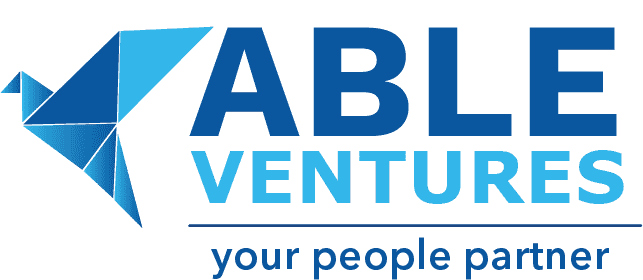Table of Contents
Designing the Hybrid Workplace: Turning Flexibility into a Competitive Advantage
- October 29, 2025
- Able Ventures
- 12:57 pm
Designing the Hybrid Workplace: Turning Flexibility into a Competitive Advantage
The hybrid workplace is no longer an experiment — it’s the new operating model for growth.
Organizations across industries are redesigning how teams collaborate, learn, and lead in an era where AI, automation, and reskilling are rewriting every role.
But here’s the real challenge: flexibility doesn’t automatically create performance.
Without leadership capability and a continuous learning mindset, hybrid workplaces can quietly erode culture, clarity, and accountability.
1. Rethinking the Modern Workplace
The hybrid workplace isn’t about location — it’s about leverage.
When designed well, hybrid models reduce overheads, sharpen focus, and create a culture of ownership.
Leaders must learn to convert autonomy into alignment. That means designing systems where trust, not proximity, drives productivity.
Companies that intentionally design hybrid work as a business strategy — not an HR benefit — are seeing stronger retention, faster decision-making, and measurable gains in leadership maturity.
2. Building a Culture That Connects, Not Just Coordinates
Hybrid success depends on connection, not constant communication.
It’s easy to have meetings; it’s harder to have meaning.
A truly connected culture prioritizes:
- Transparent feedback loops
- Recognition based on outcomes, not attendance
- Purpose-driven collaboration
In measurable terms, connected hybrid cultures show up to 40% lower attrition and significantly faster innovation cycles.
3. The Remote Revolution Needs Discipline
Remote work taught us that productivity isn’t tied to presence.
But freedom without frameworks leads to inconsistency.
Organizations that thrive in hybrid setups invest in:
- Clear digital workflows
- Consistent feedback mechanisms
- Emotional infrastructure that builds trust
The hybrid future belongs to organizations that can operationalize trust — through data, leadership, and learning.
4. From Learning to Capability: The Real Transformation
Traditional learning programs focus on completion rates; modern ones focus on capability outcomes.
For hybrid organizations, the question isn’t “How many people trained?” but “How many people changed?”
At Able Ventures, we combine assessment, learning, and leadership capability measurement into one end-to-end framework — so every learning journey links directly to performance outcomes.
Explore our Leadership Capability Scan — a diagnostic that helps organizations identify strengths, bridge gaps, and future-proof leadership in hybrid environments.
5. Leading the Hybrid Future
Hybrid is not a temporary fix; it’s a test of leadership adaptability.
It demands new muscles — clarity, empathy, digital fluency, and psychological safety.
Organizations that invest in leadership capability today will own the future of hybrid performance.
Our Perspective
Hybrid isn’t about where you sit; it’s about how you make others move.
It’s not flexibility that builds great organizations — it’s capability.
The question for every CEO today:
Can your organization learn faster than it changes?
At Able Ventures, we help leaders answer that — with science, empathy, and measurable impact.
Frequently Asked Questions
A hybrid workplace is a flexible work model that combines both remote work and in-office collaboration. It allows employees to choose where and how they work best, blending the benefits of autonomy with the structure of physical teamwork.
A well-designed hybrid work model improves productivity, reduces overhead costs, and increases employee engagement. It also attracts and retains talent by offering flexibility and better work-life balance — key factors in today’s competitive job market.
The main challenges include communication gaps, inconsistent collaboration, and difficulty maintaining culture. To overcome these, organizations need strong digital workflows, leadership capability, and clear frameworks that ensure fairness and accountability.
A strong hybrid workplace culture is built on trust, transparency, and connection. Leaders should encourage open feedback, celebrate results (not attendance), and create rituals that keep remote and in-office employees equally engaged and recognized.
Remote work refers to employees working entirely outside the office, while a hybrid workplace blends both remote and on-site work. Hybrid models offer more flexibility and collaboration opportunities while maintaining the autonomy of remote setups.
Leaders play a critical role by setting clear expectations, modeling flexibility, and fostering psychological safety. When leaders focus on outcomes and trust their teams, hybrid workplaces thrive with higher engagement and innovation.
Recent Blogs

Talent Retention Strategies: What Really Keeps Employees in 2025
A few months ago, I asked a young manager why she left a well-known tech firm after

HR Management Systems in India: What Technology Gets Right (and What It Still Can’t Do)
Technology has done something remarkable for HR — it has made the invisible visible.
Attendance, attrition,

How HR Analytics Is Transforming Workforce Decisions in India
Let’s be honest — HR used to run on intuition.
Gut feel. Manager instincts. Anecdotal evidence
